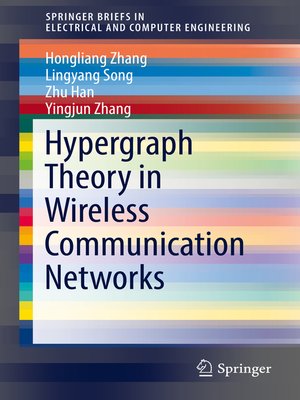Hypergraph Theory in Wireless Communication Networks
ebook ∣ SpringerBriefs in Electrical and Computer Engineering
By Hongliang Zhang

Sign up to save your library
With an OverDrive account, you can save your favorite libraries for at-a-glance information about availability. Find out more about OverDrive accounts.
Find this title in Libby, the library reading app by OverDrive.



Search for a digital library with this title
Title found at these libraries:
| Library Name | Distance |
|---|---|
| Loading... |
This brief focuses on introducing a novel mathematical framework, referred as hypergraph theory, to model and solve the multiple interferer scenarios for future wireless communication networks. First, in Chap. 1, the authors introduce the basic preliminaries of hypergraph theory in general, and develop two hypergraph based polynomial algorithms, i.e., hypergraph coloring and hypergraph clustering. Then, in Chaps. 2 and 3, the authors present two emerging applications of hypergraph coloring and hypergraph clustering in Device-to-Device (D2D) underlay communication networks, respectively, in order to show the advantages of hypergraph theory compared with the traditional graph theory. Finally, in Chap. 4, the authors discuss the limitations of using hypergraph theory in future wireless networks and briefly present some other potential applications.
This brief introduces the state-of-the-art research on the hypergraph theory and its applications in wireless communications. Anefficient framework is provided for the researchers, professionals and advanced level students who are interested in the radio resource allocation in the heterogeneous networks to solve the resource allocation and interference management problems.







